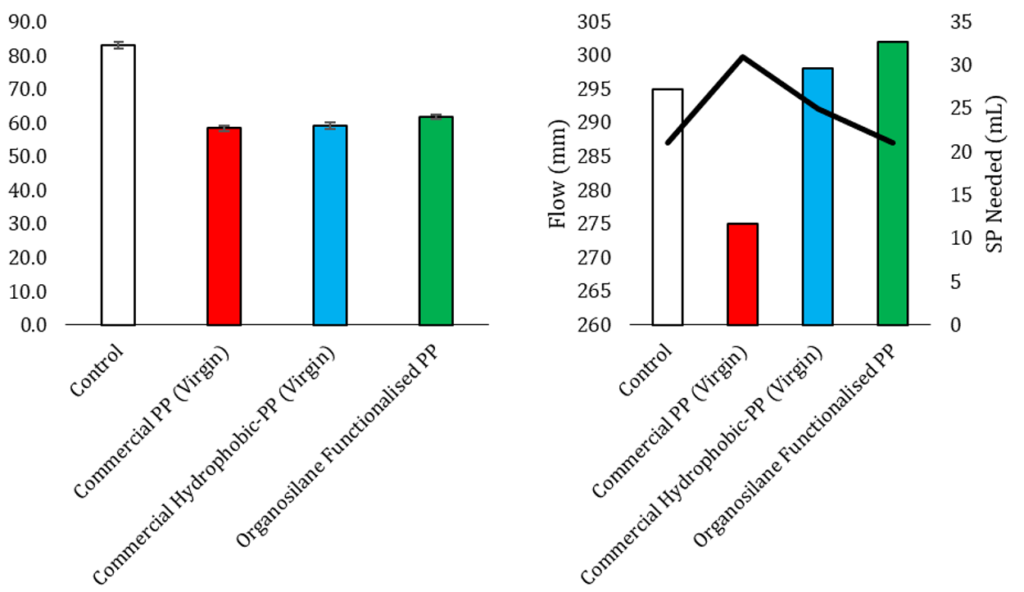Completed: Improving surface interactions of waste plastics as grain substitutes within concrete
In collaboration with AMCRETE
The cement industry is one of the biggest CO2 emitters on the planet and concurrently, we are facing a global crisis in plastic waste and how to repurpose, reuse or recycle it rather than disposing of it in landfill/incineration. The scope of this project was to allow concrete to be ‘dematerialised’ by using less raw material, reduce costs through the use of ‘zero/negative-value’ polymer waste streams in concrete whilst also improving mechanical properties of the final polymer-concrete composite.
Through collaboration across academic sectors, we aimed to tackle both described issues through the use and optimisation of polymeric waste streams (specifically polypropylene, PP) as organic binders for high performance concrete composites. Previously, the inclusion of waste polymers in concrete has been found to degrade the mechanical properties of concrete compared to standard concrete. We therefore tackled these limitations by applying a ‘bottom-up’ approach to aggregate-inorganic oxide surface interactions and material performance.
Specifically, this research studied the chemistry of interactions between inorganic oxides and cement with functional groups introduced into polymeric materials to allow correlation and insight on these interactions and optimise the final polymer-concrete composite. We found via Fourier-transform infra-red analysis (FTIR) we were able to observe how our proposed functional groups effected bond formation during the pozzolanic reaction of cement curing. We were then able to functionalise model polymers with these groups and then formulate concrete with the functionalised polymer. Concrete made in this way was found to have lower strength when compared to control samples made without polymer, however, the strength was still acceptable for building materials. Concrete formulated with pozzolanic active polymer was also found to be more workable and require less superplasticizer, typically the most expensive ingredient of concrete.


Dr. James Railton james.railton@northumbria.ac.uk
Northumbria University
Published: October 28th, 2022
Posted in
projects





